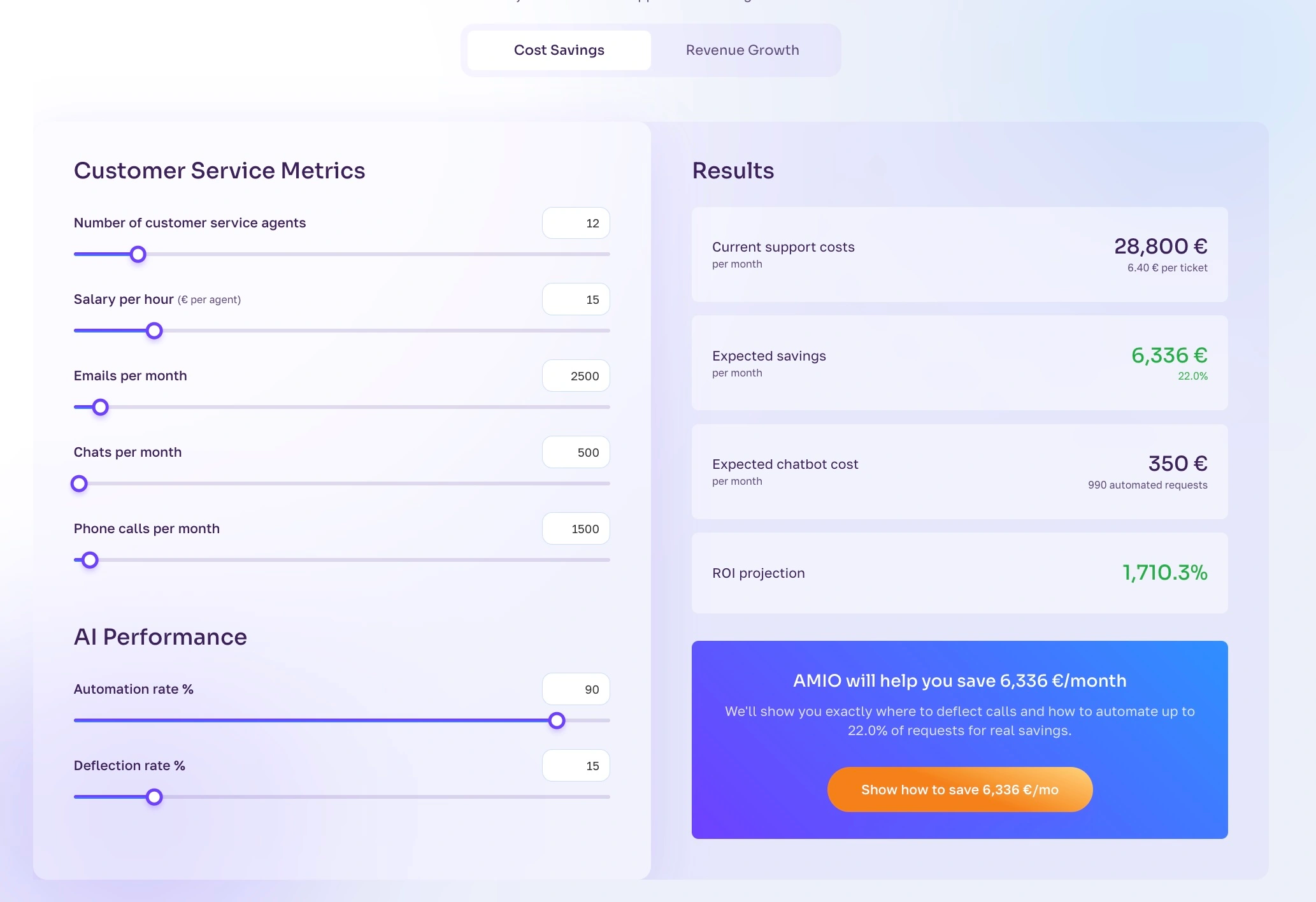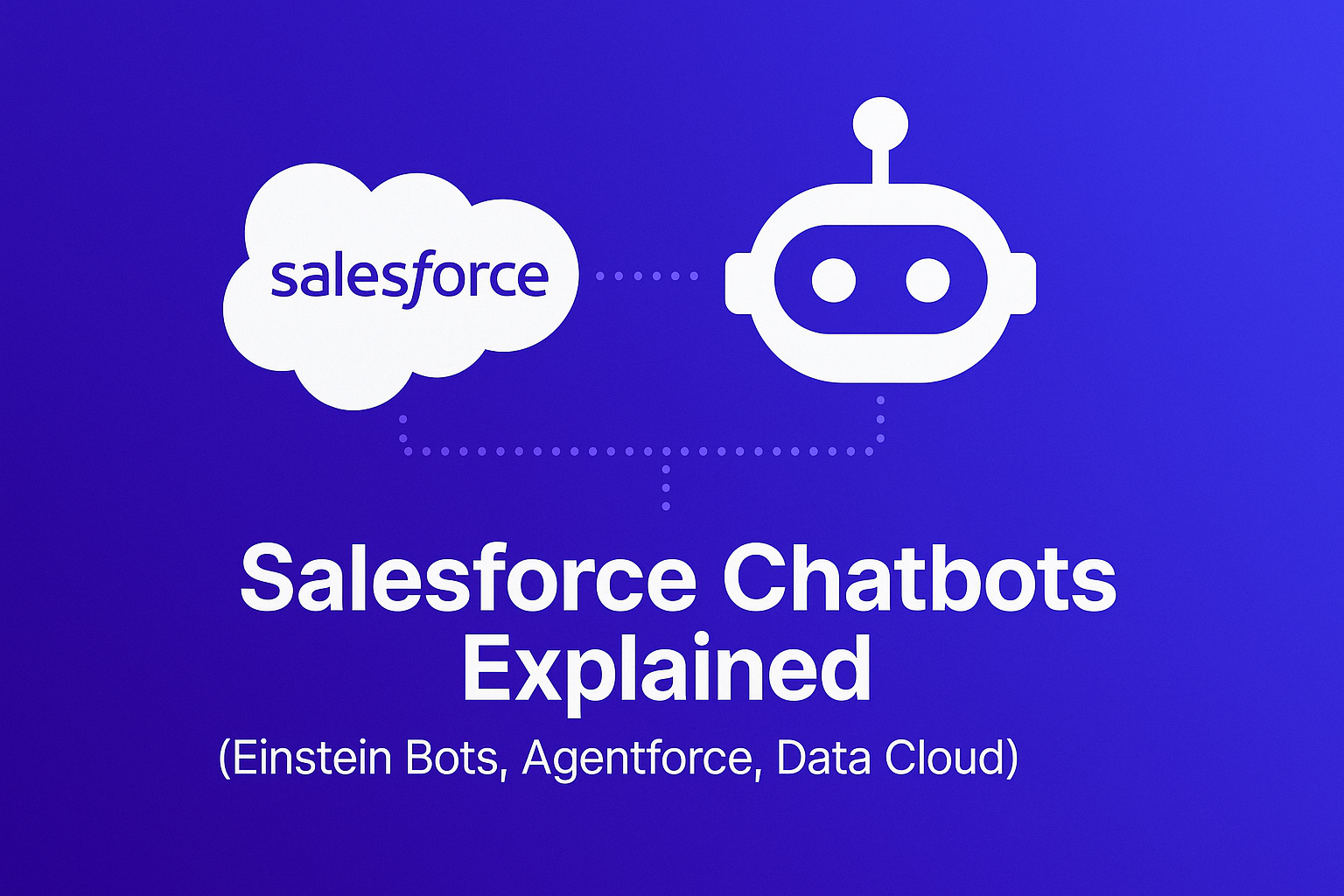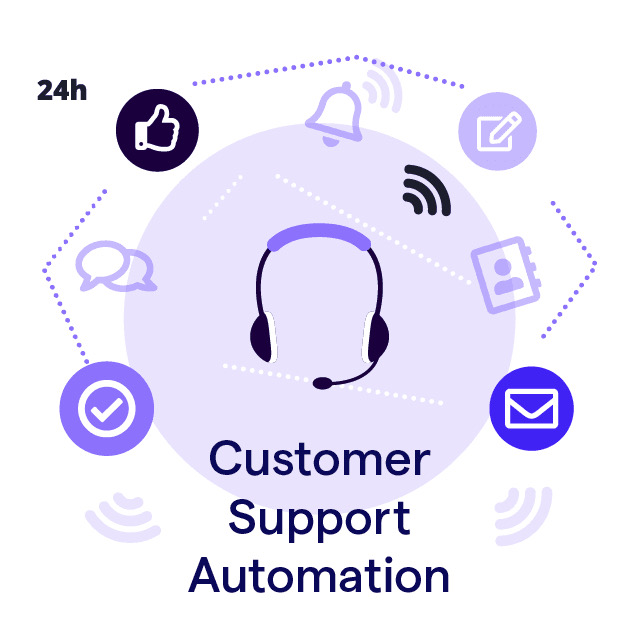How to Calculate AI ROI? Step-by-Step Guide With Calculator

95 % of companies get AI ROI wrong. They invest millions, automate everything that moves, and then wonder why the numbers don’t move with it. It’s not because AI doesn’t work. It’s because most teams can’t measure what it’s actually worth or don’t measure it at all. Still, 92 % of companies are planning to increase their AI budgets. (writer.com)
Measuring AI ROI isn’t rocket science. It’s just business math with better data.
And we’ll walk you through it. You’ll see what real AI ROI looks like in e-commerce, learn the formula behind it, and get a free calculator to test your own numbers. All of that in less time than it takes to make one espresso.
What AI ROI Really Means
Everyone loves talking about AI transformation, until someone asks, “So… what’s the return on investment?” That’s when the room goes quiet, and suddenly the conversation shifts to “use cases” instead of business outcomes.
But here’s the truth. AI ROI isn’t about how advanced your technology is. It’s about whether it’s actually moving the numbers that matter - sales, service costs, employee productivity, and customer satisfaction.
The Simple ROI Formula
In its simplest form, return on investment (ROI) is just
ROI = (Gain from AI − Cost of AI) ÷ Cost of AI
That’s it. Just a clean, undeniable question: Is your AI making you more money than it costs?
Let’s make it practical. Imagine you’re running an online store and you’ve deployed an AI-powered chatbot to automate customer support:
- AI cost: €20,000 per year
- Cost saved: €60,000 in reduced agent hours and overtime
- ROI: (€60,000 − €20,000) ÷ €20,000 = 200%
That’s not hypothetical. It’s what we see from many AMIO clients once their automation scales.
Calculate your own AI ROI in minutes using the AMIO ROI Calculator.

You can calculate your own AI ROI in minutes using the AMIO ROI Calculator. We built it for e-commerce teams who want to see real numbers.
Drop in your current support costs, time saved, and automation percentage, and get a clear, data-backed snapshot of your ROI potential.
But now is where most companies get it wrong...
Why Most Companies Measure AI ROI wrong?
According to the MIT GenAI Report, 95 % of AI projects fail to show measurable ROI. That's almost everybody. And it isn't because artificial intelligence doesn’t work. It’s because most companies just don’t measure the right things.
They only count the obvious financial benefits like direct sales or fewer support tickets and ignore the invisible multipliers and strategic advantages, such as saved hours, cleaner data, or happier teams.
The result? Teams think AI isn’t paying off when in reality, they’re just measuring the wrong thing. Because those secondary effects are where the real ROI potential lives. And once you see it that way, the math finally makes sense.
The Hidden ROI Factors Most Reports Ignore
Most reports stop counting ROI right where the real value begins.
They look at sales, ticket volume, or cost per response, but forget everything AI changes behind the scenes. ROI measurement isn’t just about total economic impact. The human factor still wins. Every smiling agent or happier customer you create feeds into ROI more than any data dashboard can capture. Here’s what the spreadsheets usually don’t show, but your AI platform quietly improves every day.
👥 1. Employee Productivity
When your chatbot handles repetitive customer service queries like “Where’s my order?” or “How do I return this?”, your agents suddenly aren’t drowning in routine tasks. That's why employee engagement skyrockets, and they can spend more time on what actually moves the business - upselling, improving CX, and optimizing processes.
Employee productivity turns directly into financial outcomes without hiring a single new person.
💬 2. Customer Satisfaction
Customer satisfaction is one of the most underrated ROI drivers in AI.
When a customer gets an instant, accurate answer at midnight, that interaction doesn’t just save time. It strengthens trust and increases customer retention. And trust, in e-commerce, compounds faster than ad spend. Every fast, seamless experience increases repeat purchases and reduces the overall cost to serve. Your AI-powered platform isn’t just answering questions. It’s building loyalty.
⚙️ 3. Operational Agility
Traditional customer service scales linearly. More tickets mean more agents, more cost, and more coffee. AI platforms don’t work like that. An AI-powered chatbot doesn’t clock out, doesn’t panic during spikes, and doesn’t need training refreshers every Monday.
During Black Friday, product launches, or sudden demand spikes, AI agents absorb demand instantly, whether it’s 200 or 20,000 conversations a day, and keep a consistent customer experience.

🧠 4. Knowledge Retention
Human support teams come and go. And so does their know-how and expertise.
AI agents don't quit. They learn. Every answered ticket, every chatbot conversation, every automated workflow quietly fuels your content automation engine.
Over time, this turns your content operations into something bigger, a searchable knowledge base that gets sharper over time. It’s the kind of transformative technology that doesn’t just save time, it upgrades how your whole business learns.
This is the compounding layer of AI ROI. The longer you use your system, the better and faster it performs. You’re building permanent institutional intelligence that no employee turnover can erase.
How to Measure AI ROI (A 3-Step Framework)
If you’ve already played with the AMIO AI ROI Calculator, congrats. You’ve done what 95 % of companies still haven’t.
But, as you know, that number is only a snapshot, not the whole movie.
The trick is learning how to combine the hard data from the calculator with the real-world soft signals your business sends every day.
Here’s how to measure AI ROI with the kind of confidence that makes even your CFO smile.

1. Define Your AI ROI Strategy Before You Automate
Your AI strategy only works when it’s tied to a clear business objective, not just “let’s implement AI.” As McKinsey's State of AI report notes, the companies with the highest ROI aren’t the ones spending the most. They’re the ones who know why they’re spending.
Before you jump into another pilot project, build a clear business case for AI. Tie every use case to a measurable business outcome - lower costs, saved time, improved user experience, productivity gain. That’s your AI transformation roadmap, and it’s way better than throwing money at buzzwords.
Write down your key cost metrics (support costs and FTEs, average ticket time, cost per resolution, campaign delivery speed) before your automation project starts. That’s the data your future ROI measurement will stand on.
2. Combine Hard Data with Human Impact
Now open your AI ROI Calculator again.
Feed in the things you can prove:
- Cost per support agent
- Number of tickets handled by AI
- Average handling time saved
- Monthly support cost
That’s your baseline ROI, the hard truth in black and white.
Then, start layering in what the calculator can’t fully measure:
- Happier customers and higher CSAT after AI adoption
- Improved employee satisfaction when manual repetitive work drops
- Reduced churn as quick resolutions stop frustration before it spreads.
- Easier scalability because AI platforms can handle 10× the conversations without 10× the cost.
This mix of quantifiable and qualitative data is what turns a number into a measurement framework, one that reflects the full impact of your AI platform.
3. Track Your AI ROI Over Time, Not Just Once
ROI isn’t a one-time equation. It’s a moving target, especially when your AI initiatives keep learning and improving. The real insight comes from comparing your baseline (the calculator number) with your evolving metrics quarter after quarter.
Did your customer satisfaction rise?
Has your AI adoption reduced overhead more than expected?
Once automation kicks in, your AI performance monitoring becomes as essential as your morning coffee. Think of it as fitness tracking for your tech stack. If your technology infrastructure isn’t built to scale or track ROI over time, you’ll be guessing instead of improving.
💡 Try the AMIO ROI Calculator again after 3–6 months of automation. It’s not just a one-time tool. It’s your benchmark for continuous performance monitoring.

You Can’t Optimize What You Don’t Measure
At this point, you’ve seen the full picture. AI ROI isn’t magic. It’s just simple math with meaning. Most companies aren’t failing at AI investments because their technology is bad. They’re failing because they measure adoption and not outcomes. They track how many Large Language Models they’ve deployed, but not how many hours, euros, or customers they’ve gained.
But that’s changing fast. As enterprise AI adoption matures, the real leaders aren’t those with the biggest AI budgets; they’re the ones with the clearest measurement frameworks. Those who align every agentic AI initiative with their business objectives.
Here’s the recap:
- AI ROI starts with hard numbers. Our calculator gives you that.
- It scales through hidden multipliers - productivity, satisfaction, agility, and retention.
- And it compounds over time because great AI platforms learn, adapt, and grow in value.
So whether you’re testing generative AI for product descriptions, building AI-powered recommendation engines, or automating your customer service, there’s one rule that never changes: If you can’t measure it, you can’t improve it.
In the end, AI isn’t about hype; it’s about numbers. Brands that consistently measure ROI see their market share grow faster and their teams outperform industry benchmarks. The ones that win treat ROI tracking as a habit, not a quarterly report.
If your AI hasn’t shown its value yet, maybe it’s not broken. Maybe it’s just waiting to be measured. It’s not about adding more AI. It’s about finally seeing what yours is worth.
FAQ Section: Measuring AI ROI With Confidence
What is AI ROI?
AI ROI (Return on Investment) shows how much value your AI initiatives generate compared to what they cost. It includes not only direct savings (like fewer support tickets or lower FTE costs) but also indirect benefits such as customer satisfaction, employee productivity, and long-term growth.
In advanced AI governance frameworks, ROI is considered part of overall regulatory compliance and performance standards meaning, your AI isn’t just profitable, it’s also responsibly managed.
How do you calculate AI ROI?
Use the simple formula: AI ROI = (Gain from AI − Cost of AI) ÷ Cost of AI.
For example, if your AI-powered chatbot saves €60,000 annually and costs €20,000, your ROI is 200%. Try the AMIO ROI Calculator to see your own numbers instantly.
What’s a good ROI for AI investments?
It depends on your industry and use case, but most e-commerce AI projects deliver between 150–400% ROI once automation scales. (writer.com)
High-performing companies (according to Forrester and McKinsey’s AI reports) achieve even higher ROI by combining automation with strategic alignment and AI governance.
Why is AI ROI hard to measure?
Because most teams measure adoption, not outcomes. They track how many AI agents or Large Language Models they’ve deployed, but not how much time, money, or market share they’ve gained. True ROI requires a clear measurement framework that connects data to real business outcomes.
What makes agentic AI different for ROI?
Unlike traditional generative AI, agentic AI takes action autonomously - not just generating text but completing tasks. This leads to faster results, lower operational costs, and stronger measurable ROI across customer service, supply chain, and content operations.
How long does it take to see AI ROI?
While some e-commerce AI initiatives do report measurable ROI within 3–6 months, most reliable studies indicate a time horizon of 12–24 months or more (Deloitte), especially for full-scale deployments. The fastest gains come from automation use cases like customer support or content creation, where repetitive manual work is easily reduced.
How can I prove AI ROI to executives or get budget approval?
Start small, measure clearly. Use the AMIO ROI Calculator to create a quick business case showing potential savings and revenue gains. Executives don’t need hype. They need numbers that show how AI improves efficiency, satisfaction, and financial outcomes.
Are there hidden costs that affect AI ROI?
Yes - poor integration, missing governance frameworks, or unclear data governance can quietly ROI. That’s why successful companies invest not only in AI platforms, but also in in solid change management, ethical oversight, and scalable technology infrastructure. This ensures that your artificial intelligence ROI isn’t just positive this quarter, but sustainable in long-term.
Book a 30-minute session where we will find out how AI bot can help you decrease call center costs, increase online conversion, and improve customer experience.
Book a demo



